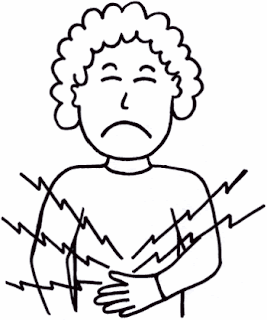10 ways to stand Tall. (Postures)
Posture is the body language, a pose that tells the rest of the world how you feel - about others, about your life, about yourself.
"Try to slouch and tell someone you are excited about something."
"You can't do it. You have to straighten up to be excited. Good posture makes full breathing, full inspiration, possible."
Good posture is practical for other reasons, too. It's the perfect way to prevent backaches. Your backbone - the 33 bony segments called vertebrate - is your body's foundation. The vertebral column is what enables you to stand upright. It surrounds and protects your spinal cord, and it is where muscles and ligaments attach to your back. It works as a weight bearer, yet allows flexibility in movement, so you don't walk stiffly. like a zombie.
Muscles are the key to good postures. Back muscles in proper working order support the spine from the rear. Stomach muscles help to support the spine from the front.
Poor posture wears against the discs - the shock absorbers in your spine. Poor posture strains and loosens ligaments. And it pushes and pulls unevenly on all your muscles.
A lifetime of slouching can cause chronic fatique, headaches and sometimes body disfigurement. Don't let it happen to you. Here's how to make your posture perfect.
Start each day in balance. Begin each day by putting your skeleton in alignment. Follow this routine.
Start with your shoulders level and square . Roll them forward 10 to 15 times, as if you were trying to paddle a boat with your shoulders. Then roll them back. Next, hold your head high and rotate it clockwise. Repeat six to eight times, then circle in the other direction.
Keep one leg up. If you stand for long periods of time, place a box on the floor in front of you and put one foot on it. This position will release back tension.
Grad a pillow. Promote good posture by sitting in a chair molded so that your back is forced into a healthy arch. Or, if that kind of chair isn't available, put a cushion in the small of your back, between you and the chair.
Stay on the level. Advice on sitting works in a car. Pull your seat forward, towards the pedals, until your knees are bent and slightly higher than your hips and your thighs are parallel to the floor. Use a small cushion behind the small of your back or use the seat adjustment available in some cars to support the curve in your back.
Uncross your legs. Crossed legs throw your body out alignment. Barbers and hairstylists have known it for years, which is why a good one will tell you to uncross the legs before they cut your hair - they don't want their work to come out lopsided. Keep your feet flat on the floor.
Keep in tone. Walk, run, swim, bicycle, do aerobics. Stretch your muscles daily. Postures is only as good as the muscles that keep you in line. Find some kind of regular physical activity to keep your muscles strong.
Get maximum relief. At the end of the day or may be during a break period, rest your back and improve your posture at the same time. Lie on the floor with your legs on a low chair or stool. Hold for 15 minutes.
Keep your feet planted. Keep both feet flat on the floor when you stand. The habit of resting weight on one leg while standing can begin an undesirable back curvature.
Arch your back. Before you begin your day and again when it is over, arch your back to counteract slumping. Here's one way: On the fours, stretch upward, as if you were an angry cat arching its back. Then lower your back to level it.
"Posture is personality"May be your posture isn't an intensional stance, but simply the result of a bad habit. Even so, it can give people the wrong message.
"Try to slouch and tell someone you are excited about something."
"You can't do it. You have to straighten up to be excited. Good posture makes full breathing, full inspiration, possible."
Good posture is practical for other reasons, too. It's the perfect way to prevent backaches. Your backbone - the 33 bony segments called vertebrate - is your body's foundation. The vertebral column is what enables you to stand upright. It surrounds and protects your spinal cord, and it is where muscles and ligaments attach to your back. It works as a weight bearer, yet allows flexibility in movement, so you don't walk stiffly. like a zombie.
Muscles are the key to good postures. Back muscles in proper working order support the spine from the rear. Stomach muscles help to support the spine from the front.
Poor posture wears against the discs - the shock absorbers in your spine. Poor posture strains and loosens ligaments. And it pushes and pulls unevenly on all your muscles.
A lifetime of slouching can cause chronic fatique, headaches and sometimes body disfigurement. Don't let it happen to you. Here's how to make your posture perfect.
Start each day in balance. Begin each day by putting your skeleton in alignment. Follow this routine.
- Full extension of the spine: Stand with your knees bent slightly. Clasp your hands in front. As you breathe in, stretch your hands up, palm towards the ceiling, lifting your shoulders off your rib cage. Breathe out as you bring your shoulders down, setting your shoulders squarely onto your body. Let your rib cage settle on the inside of your spine, shoulders relaxed, as you lower your arms slowly.
- Side flexion: Stand and lean to the right to touch your ear to your shoulder. Follow that through , bending as best you can toward your hip. Stand again and repeat this in the other direction.
- Repeat full extension of the spine exercise.
- Rotation of spine: Turn your head slowly to look over your right shoulder. Turn as far back as possible. Turn your head back to the center. Turn your head slowly to look over your shoulder. Turn back to the center.
- Repeat full extension of the spine exercise.
- Forward flexion of the spine: Stand and curl your back forward, dropping your head and arms toward the floor, curving and elongating your spine.
- Repeat full extension of the spine exercise.
- Hyperextension of the spine: Sit or stand. place your hands on your hips, and lean backward very gently. Your pelvis should be tucked under.
- Finish with full extension of the spine exercise.
Start with your shoulders level and square . Roll them forward 10 to 15 times, as if you were trying to paddle a boat with your shoulders. Then roll them back. Next, hold your head high and rotate it clockwise. Repeat six to eight times, then circle in the other direction.
Keep one leg up. If you stand for long periods of time, place a box on the floor in front of you and put one foot on it. This position will release back tension.
Grad a pillow. Promote good posture by sitting in a chair molded so that your back is forced into a healthy arch. Or, if that kind of chair isn't available, put a cushion in the small of your back, between you and the chair.
Stay on the level. Advice on sitting works in a car. Pull your seat forward, towards the pedals, until your knees are bent and slightly higher than your hips and your thighs are parallel to the floor. Use a small cushion behind the small of your back or use the seat adjustment available in some cars to support the curve in your back.
Uncross your legs. Crossed legs throw your body out alignment. Barbers and hairstylists have known it for years, which is why a good one will tell you to uncross the legs before they cut your hair - they don't want their work to come out lopsided. Keep your feet flat on the floor.
Keep in tone. Walk, run, swim, bicycle, do aerobics. Stretch your muscles daily. Postures is only as good as the muscles that keep you in line. Find some kind of regular physical activity to keep your muscles strong.
Get maximum relief. At the end of the day or may be during a break period, rest your back and improve your posture at the same time. Lie on the floor with your legs on a low chair or stool. Hold for 15 minutes.
Keep your feet planted. Keep both feet flat on the floor when you stand. The habit of resting weight on one leg while standing can begin an undesirable back curvature.
Arch your back. Before you begin your day and again when it is over, arch your back to counteract slumping. Here's one way: On the fours, stretch upward, as if you were an angry cat arching its back. Then lower your back to level it.


Comments
Post a Comment